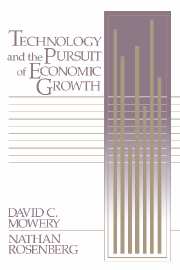Book contents
- Frontmatter
- Contents
- Preface
- Part I Introduction
- Part II The development of the institutional structure, 1860–1940
- Part III The development of the postwar system, 1940–1987
- Part IV New environment, new research organizations
- 8 The changing context of innovation, 1980–present
- 9 International and domestic collaboration in research and development
- 10 The merger of technology and trade policies
- 11 Concluding observations
- Bibliography
- Index
10 - The merger of technology and trade policies
Published online by Cambridge University Press: 22 March 2010
- Frontmatter
- Contents
- Preface
- Part I Introduction
- Part II The development of the institutional structure, 1860–1940
- Part III The development of the postwar system, 1940–1987
- Part IV New environment, new research organizations
- 8 The changing context of innovation, 1980–present
- 9 International and domestic collaboration in research and development
- 10 The merger of technology and trade policies
- 11 Concluding observations
- Bibliography
- Index
Summary
As we noted in Chapters 8 and 9, two of the factors that have changed the environment for innovation are increased global interdependence in the economic and technological spheres, and growing involvement by governments in industrialized and industrializing nations in policies to promote innovation and technological advance. These developments are blurring the boundaries between technology and trade policies. The merger of these two policy areas has important implications for policy formulation in both areas. The growing importance of technology issues within trade policy poses challenges to the structure of U.S. trade policy. These challenges stem from the clash between the dynamic effects of technological change and the largely static conceptualization of trade policies and consequences that underpins U.S. trade policy, as well as the fact that the instruments of government technology policy frequently lie outside the purview of conventional trade policies. The merger of these policies could also lead to restrictions on international scientific communication and cooperation, if policymakers overstate the parallels between international trade in goods and international flows of knowledge and act to limit international scientific and technological collaboration and communication.
An unrealistically narrow or nationalistic view of the sources and contribution of scientific research to commercial innovation may create a form of scientific mercantilism, replacing or (more likely) supplementing protectionist trade policies, that could severely hamper the operation of global and national R&D systems. U.S. government actions to restrict foreign access to domestic commercial R&D also undercut official efforts to improve U.S. firms' access to foreign research projects.
- Type
- Chapter
- Information
- Technology and the Pursuit of Economic Growth , pp. 274 - 289Publisher: Cambridge University PressPrint publication year: 1989



